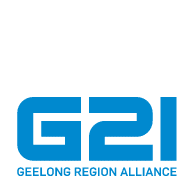Federal election outcome benefits the G21 region
With the election of the new Albanese government, we look forward to the fulfilment of pre-election commitments supporting seven of our Priority Projects:
- $6 million towards a highball centre for basketball, netball, badminton and volleyball at Armstrong Creek.
- $20 million towards an indoor aquatic centre with allied health facilities at Drysdale.
- $125 million for the Barwon Heads Road duplication Stage 2 (Reserve Road to Lower Duneed Road).
Clean Energy, Clean Tech & Circular Economy
- $500,000 for a community battery at The Sands, Torquay.
- $500 million Driving the Nation Fund – which will allow the Commonwealth to co-invest in electric vehicle chargers, as well as hydrogen and biofuel refuelling infrastructure (nationally).
- $39.3 million to build EV charging network with charging stations at an average interval of 150km on major roads (nationally).
- Target: net zero by 2050, reduce emissions by 43 per cent by 2030.
- $450,000 for expansion of the Bannockburn Family Services Centre (BFSC).
- $10 billion Housing Australia Future Fund – which will build 30,000 new social and affordable housing properties in its first five years (nationally).
Affordable Housing & Worker Accommodation
- Help to Buy – a ‘shared equity’ scheme that will allow eligible home buyers to get a government contribution of up to 40% towards the purchase price of their property. Home buyers will need at least a 2% deposit.
- Regional First Home Buyer Support Scheme – which will provide a government guarantee of up to 15 per cent for eligible first home buyers, so locals with a 5 per cent deposit can avoid paying mortgage insurance – saving up to $32,000.
Regional Digital Connectivity & Upskilling
- $600,000 for better mobile coverage in St Leonards.
- $2.4 billion to Boost the NBN and secure more Australian families and businesses quality, high speed internet by expanding full-fibre NBN access to 1.5 million premises (nationally).
G21 advocated strongly for these projects in the long lead up to the election, well before party campaigning commenced. We are looking forward to their implementation.
At a local level, G21 would like to congratulate Richard Marles MP, who becomes Deputy Prime Minister of Australia after his win in the Federal Seat of Corio.
We would also like to congratulate Libby Coker MP in Corangamite, Catherine King MP in Ballarat and Dan Tehan MP in Wannon after their re-election to the House of Representatives.
G21 will continue to work closely with all our local members on projects of regional significance.












